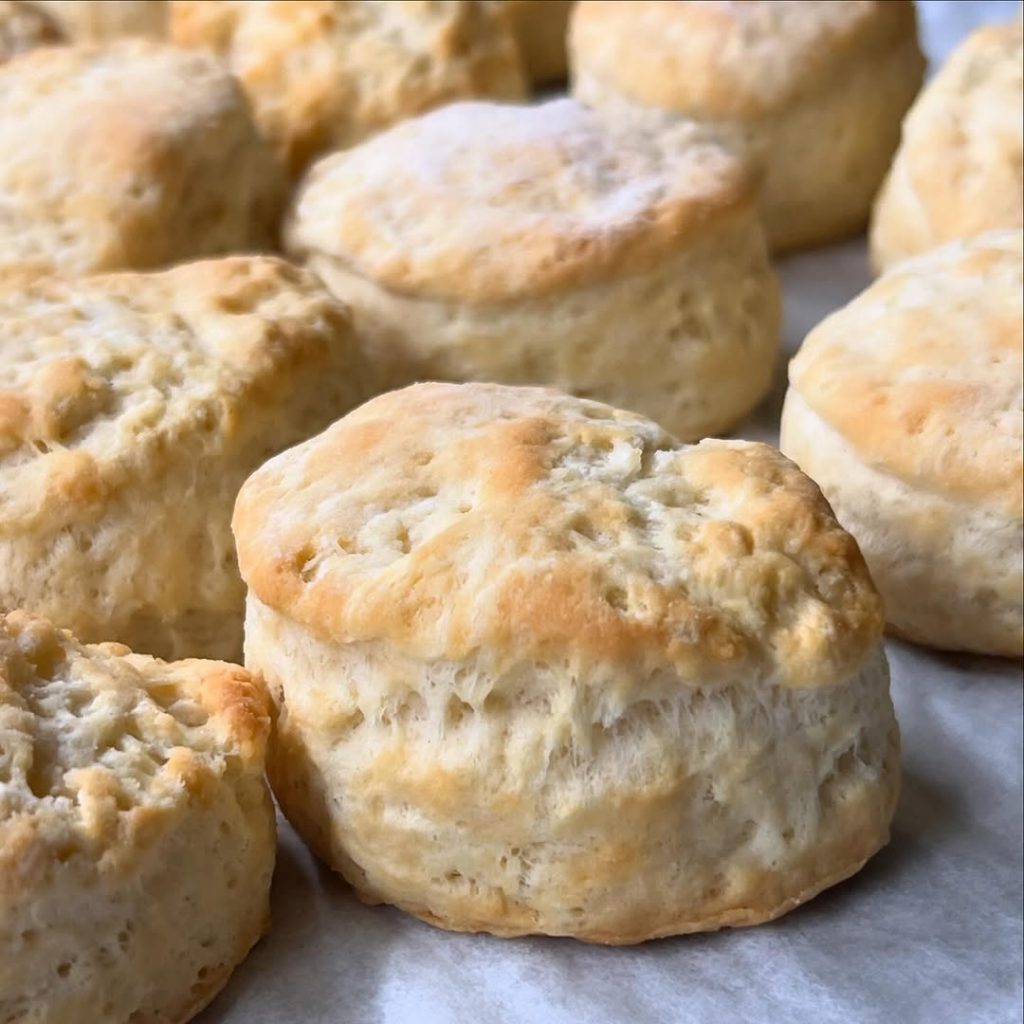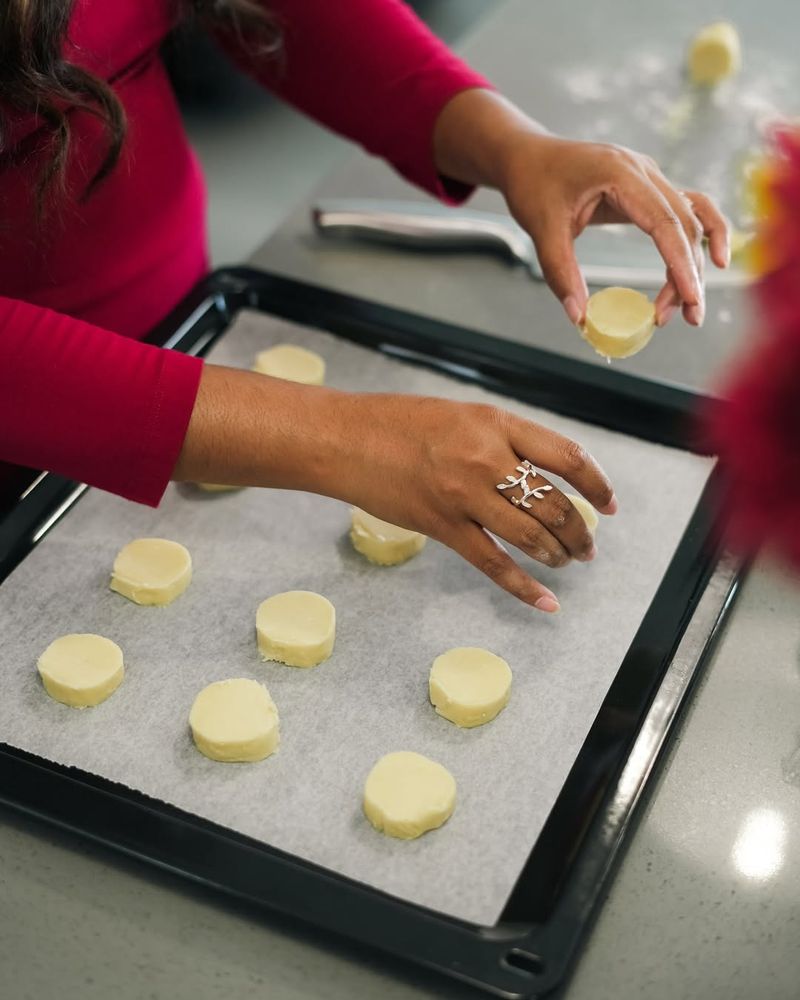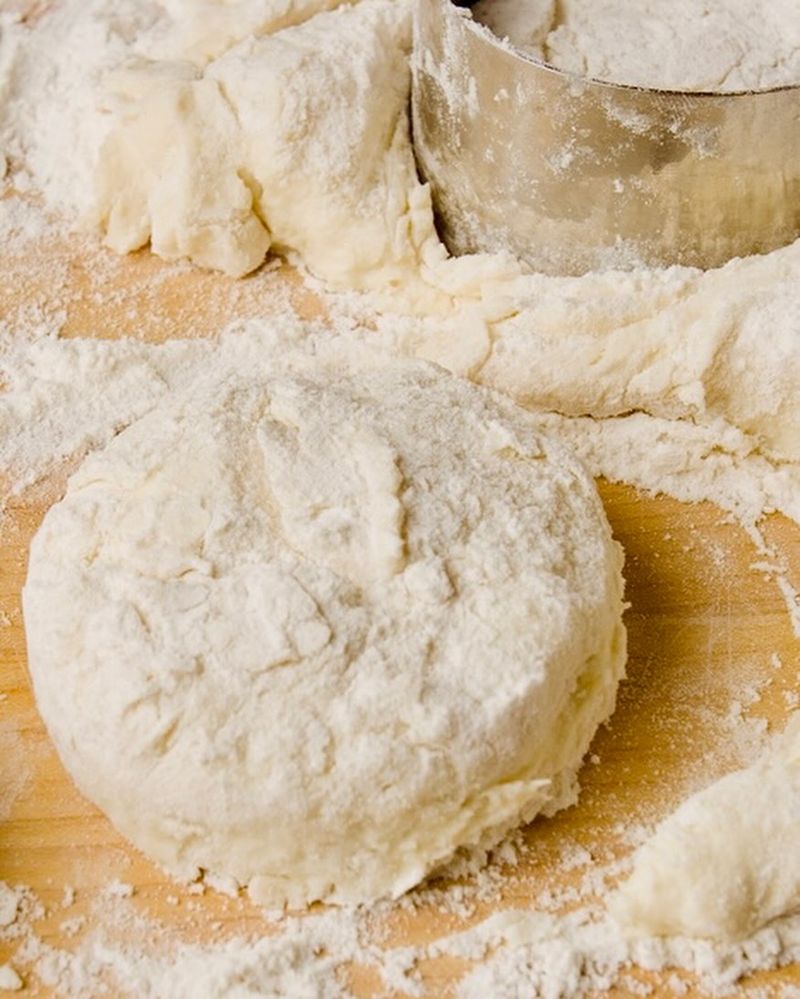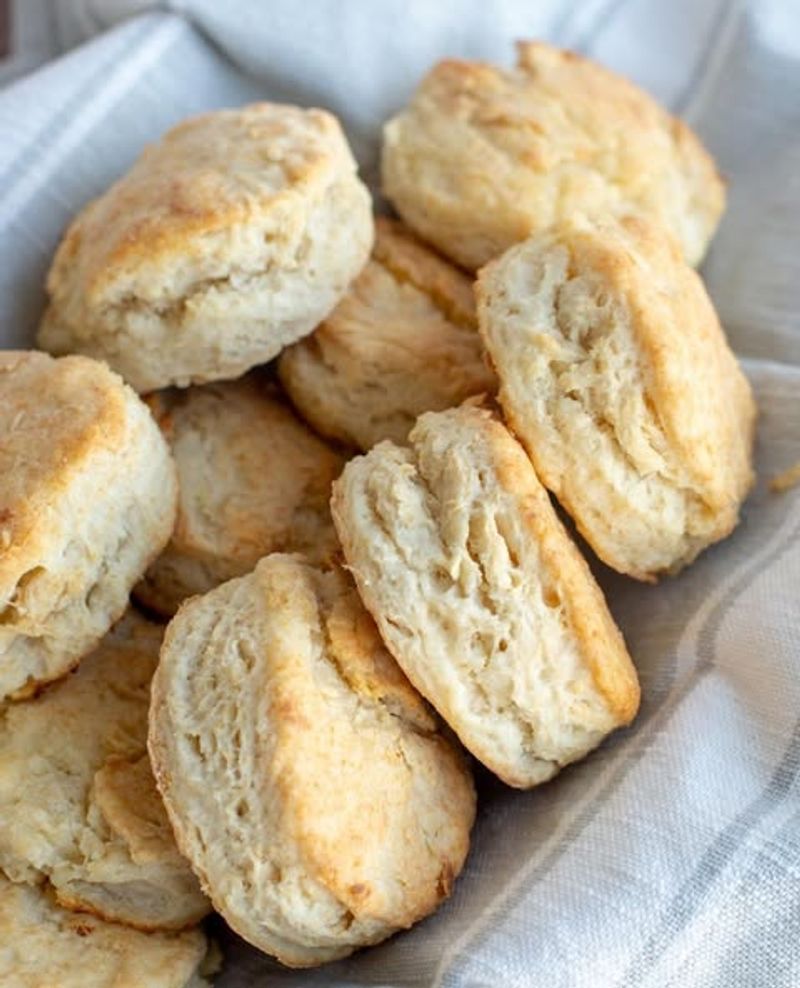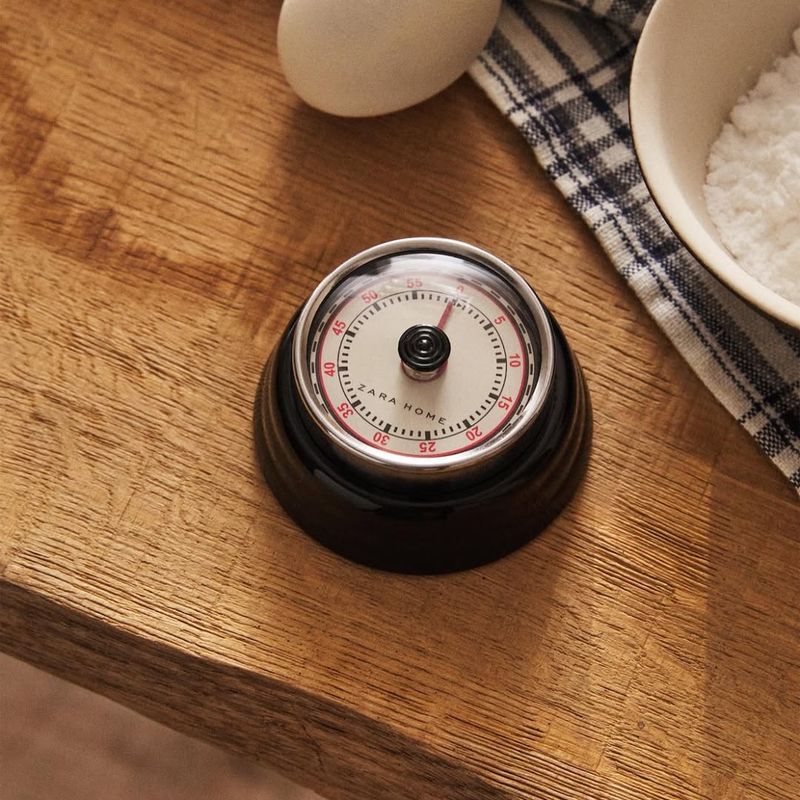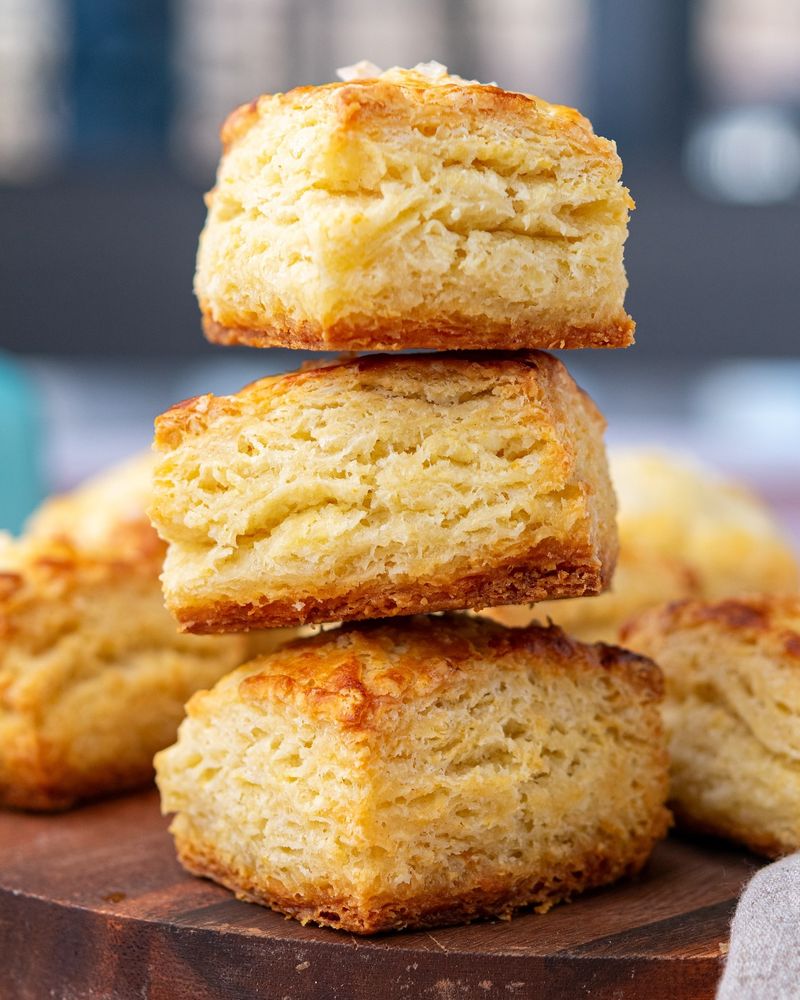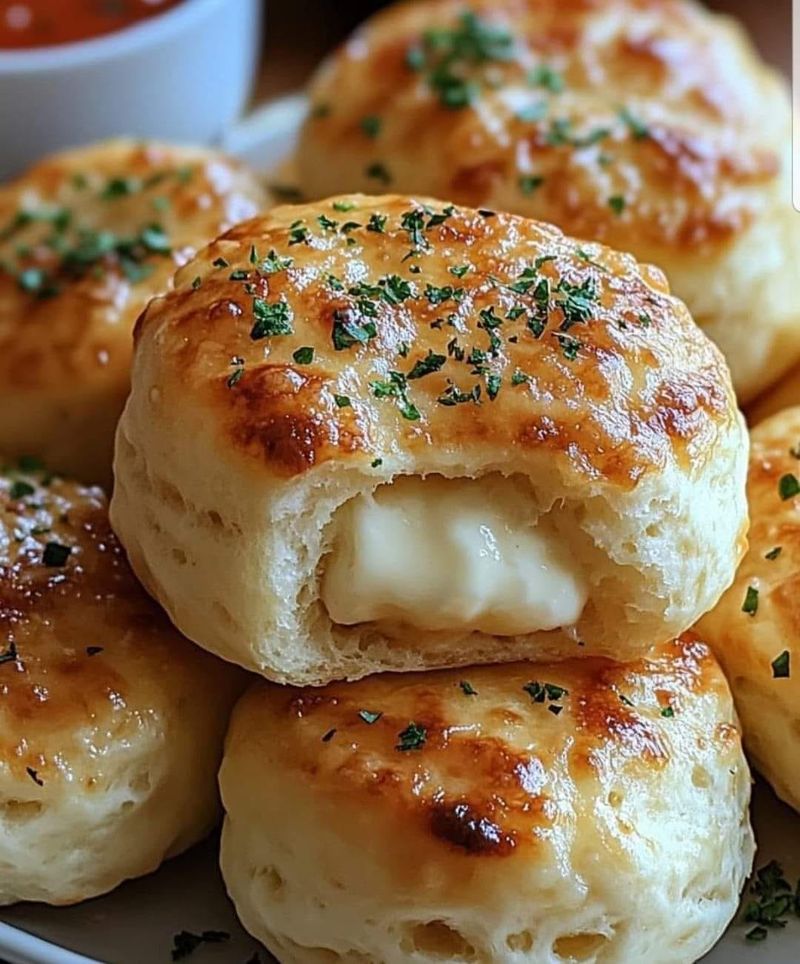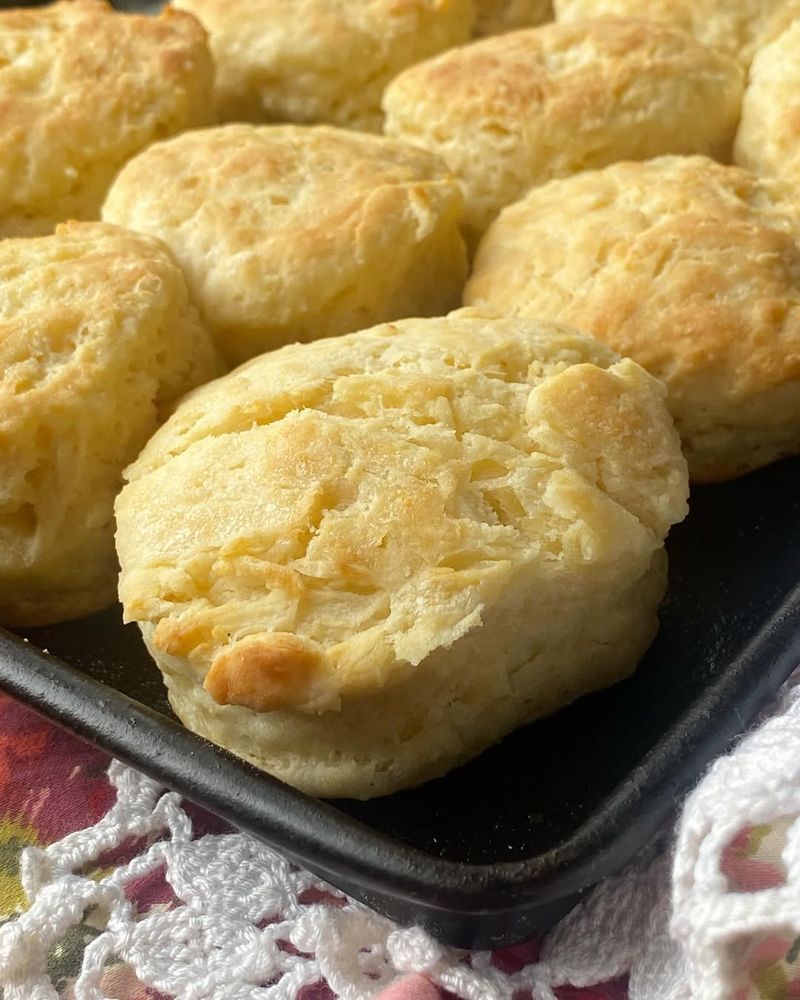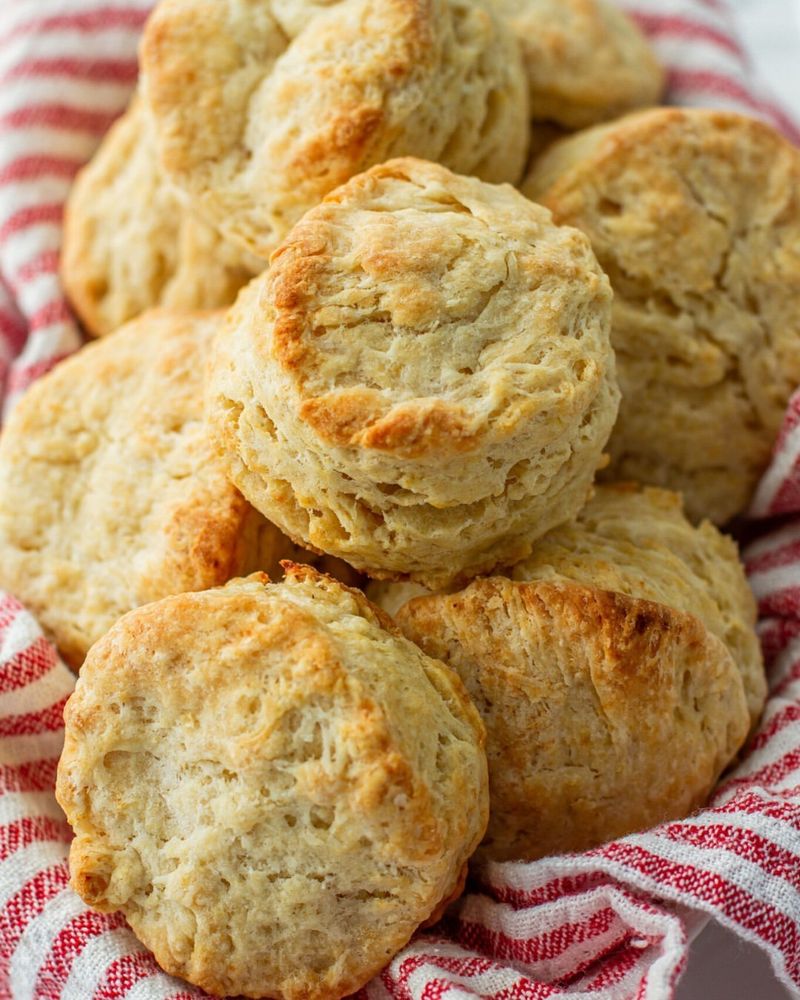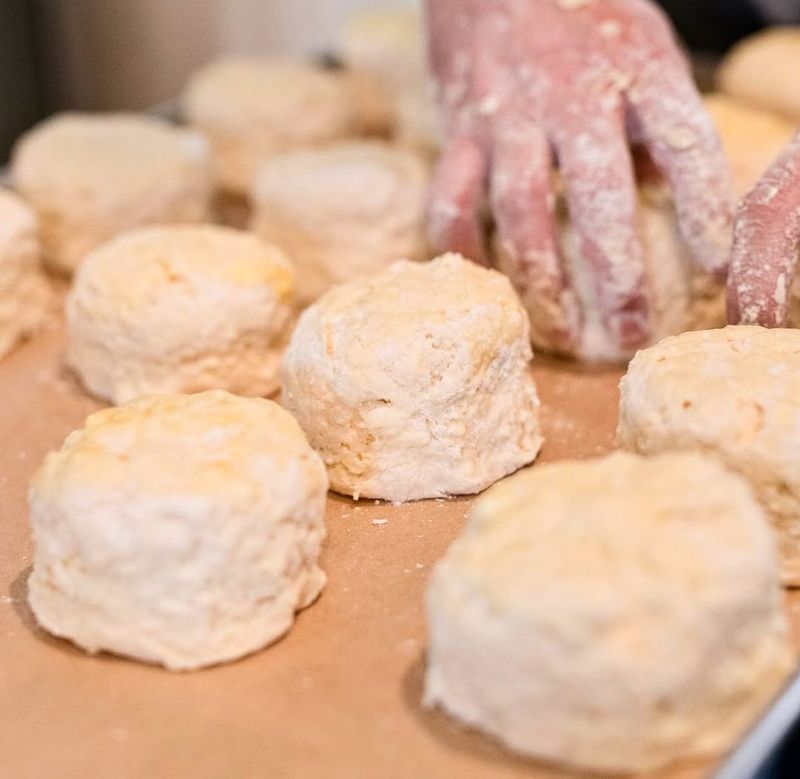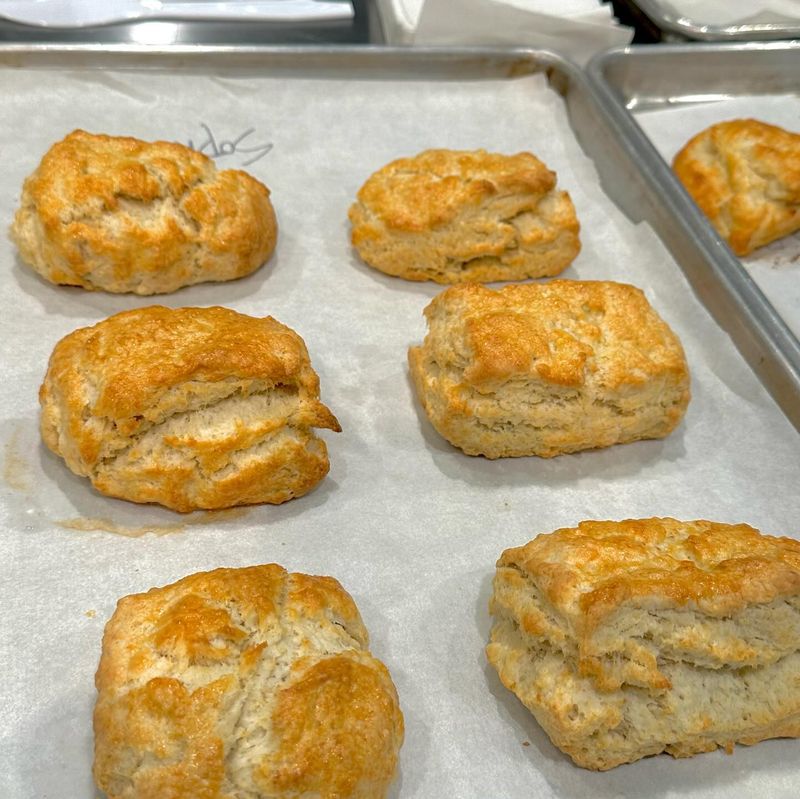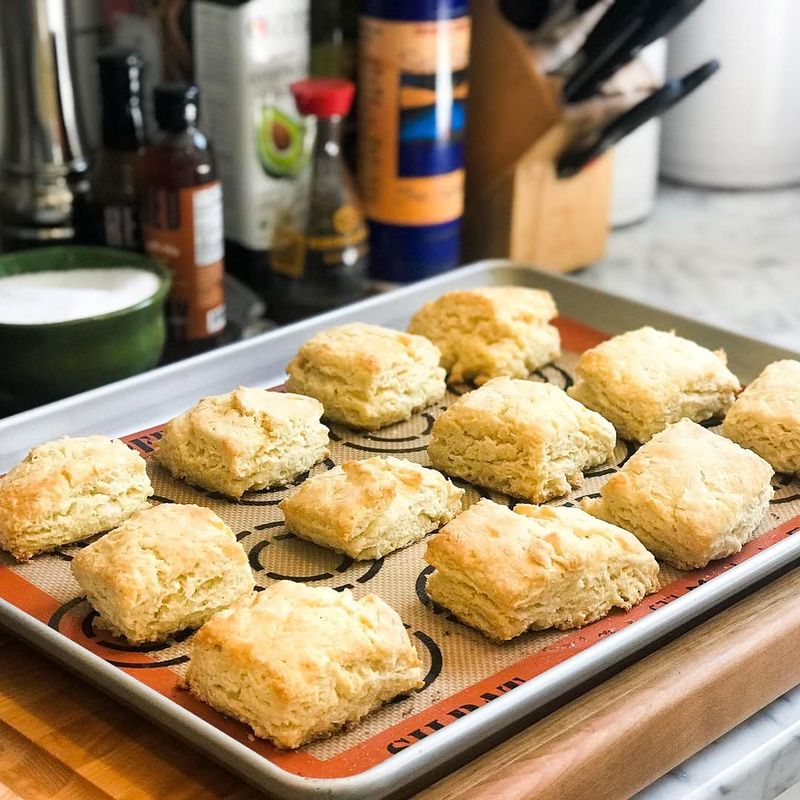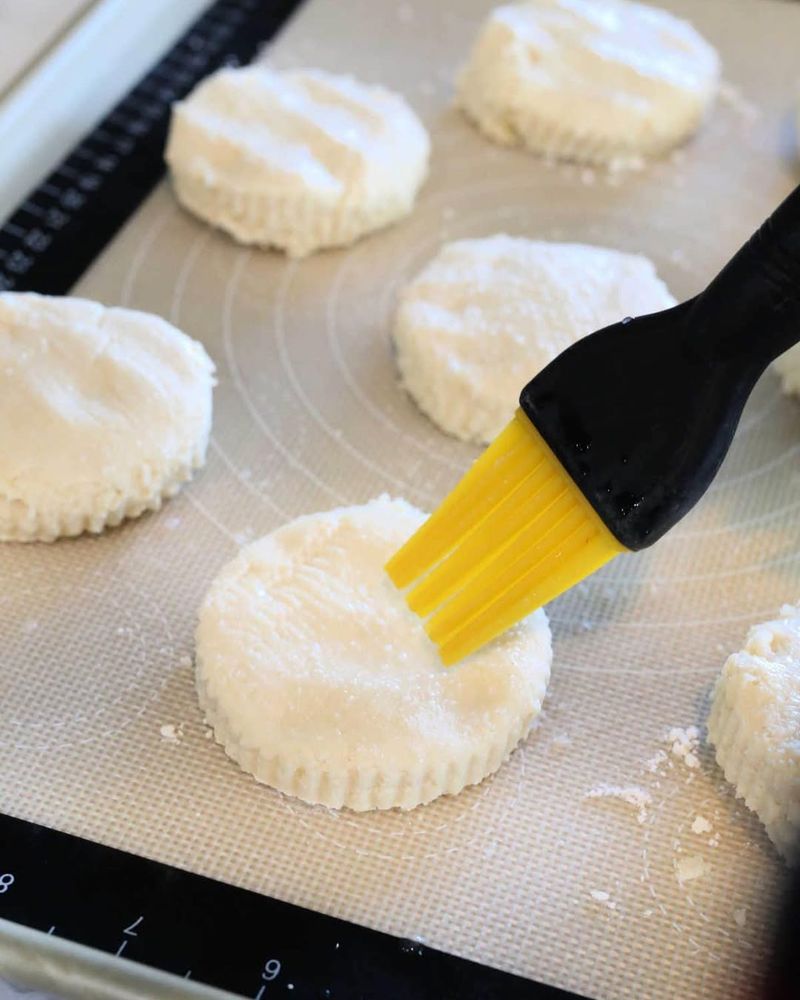Ah, canned biscuits. These convenient little doughy delights hold such promise, don’t they? Almost magical, they appear in supermarket aisles, ready to turn an ordinary meal into something extraordinary with a simple pop and bake.
However, their convenience often leads to unexpected culinary missteps. Have you ever found yourself staring at a tray of disappointing biscuits, wondering where it all went wrong? If so, you’re certainly not alone.
In this blog post, we’re going to explore 20 common mistakes people make with canned biscuits and how to avoid them for that perfect bake every time.
1. Skipping the Label Reading
How often have you glanced past the label on a can of biscuits? It seems simple, but skipping this step can lead to disastrous results. Each brand offers specific baking instructions that, if ignored, may lead to overbaked or undercooked biscuits.
However, by carefully reading the label, you ensure the biscuits bake perfectly. Next time, remember to pause and read the instructions, ensuring a delightful bake every time.
2. Using Expired Dough
Ever wondered why your biscuits didn’t rise as expected? Using expired dough could be the culprit. Expired dough loses its ability to rise properly, leading to flat and dense results.
Always check the expiration date before baking. Fresh dough ensures optimal rise and delicious taste. Consider this small step a key to delightful biscuits.
3. Ignoring Oven Temperature
If there’s one mistake that ruins biscuits, it’s ignoring the oven temperature. Setting your oven to the right temperature is crucial. An oven that’s too hot or too cold can affect the texture and taste.
Checking with an oven thermometer can avoid this pitfall, leading to golden, fluffy biscuits rather than disappointingly hard ones.
4. Not Adjusting for Altitude
Wherever you might be baking, altitude matters. Baking at high altitudes without adjustments can lead to flat and dense biscuits. The air pressure changes require modifications in baking time and temperature.
Recipes often suggest adjustments, ensuring the biscuits rise properly. By considering your altitude, you can achieve fluffy, well-risen biscuits every time.
5. Overcrowding the Baking Tray
Though it might seem efficient, overcrowding the baking tray is a common mistake. Biscuits need space to expand and cook evenly. Placing them too close together can cause them to bake unevenly or stick together.
By allowing space between each biscuit, you ensure even baking and a satisfying texture. Remember, a little room can make a big difference!
6. Neglecting to Grease the Pan
If you neglect to grease the pan, your biscuits may end up sticking, ruining their shape. A little grease goes a long way, ensuring easy removal and an attractive appearance.
Non-stick spray or butter works wonders. Taking a moment to prepare the pan can save you from future frustration and result in picture-perfect biscuits.
7. Overhandling the Dough
Though it might seem tempting, overhandling the dough can be detrimental. Canned biscuit dough is designed to be handled minimally.
Excessive kneading can lead to tough biscuits instead of the desired flakiness. Handling the dough gently ensures a tender crumb. So, let the dough guide you, and resist the urge to overwork it.
8. Opening the Oven Too Often
Curiosity may lead you to peek into the oven, but doing it too often can disrupt the baking process. Each time you open the oven door, you lose heat, affecting the biscuits’ ability to rise properly.
Resist the temptation to check repeatedly. Trust the process and let the biscuits bake undisturbed for best results.
9. Forgetting to Preheat the Oven
Often in a rush, you might forget to preheat the oven. Preheating is essential to achieve the right texture and rise. Baking in a cold oven can lead to uneven cooking and subpar biscuits.
Always preheat your oven fully before placing the biscuits inside. It’s a small step with a big impact on the final result.
10. Ignoring the Timer
Though you may gauge time by eye, ignoring the timer can lead to overbaked biscuits. Biscuits bake quickly, and a minute too long can make a difference.
Setting a timer allows you to focus on other tasks without risking your bake. Ensure your biscuits come out perfectly by adhering to the recommended baking time.
11. Using the Wrong Baking Sheet
Using the wrong baking sheet can affect your biscuits’ outcome. Dark or thin sheets may cause the bottoms to burn before the tops are done.
Opting for a heavy-duty or light-colored sheet ensures even heat distribution. Small choices like the right baking sheet contribute to perfectly baked biscuits you’ll be proud to serve.
12. Using Cold Ingredients
Cold ingredients can hinder your biscuits’ texture. Allowing ingredients like butter and milk to reach room temperature aids in proper mixing and baking. Cold ingredients can result in unevenly baked biscuits.
Next time, set your ingredients out in advance, letting them warm up for a smooth, delightful bake that everyone will enjoy.
13. Adding Extra Ingredients
Adding extra ingredients might seem creative, but it can disrupt the balance of canned biscuits. They are formulated for specific proportions. Adding too much can lead to unpredictable texture and flavor.
If you wish to experiment, start small and adjust gradually. Maintaining balance ensures the biscuits’ integrity while exploring new flavors.
14. Not Letting Them Cool Properly
If you rush the cooling process, you might end up with soggy bottoms. Letting biscuits cool properly on a wire rack prevents moisture buildup. This step ensures a crisp exterior and fluffy interior.
Exercise patience; allow the biscuits to cool completely for the best texture. Proper cooling completes the baking process, rewarding you with a perfect bite.
15. Ignoring Recommended Baking Times
Though you might think you know better, ignoring recommended baking times can lead to disaster. These guidelines are tested to ensure optimal results. Trust in the given times for perfectly baked biscuits.
Avoid the temptation to adjust based on appearance alone, and rely on the recipe’s wisdom for consistency and satisfaction.
16. Leaving Them Too Long Uncooked
Leaving biscuits uncooked for too long can affect their rise. Once opened, the dough needs immediate baking to maintain its leavening properties. Delay leads to less-than-ideal results.
Plan your baking time to align with meal preparation, ensuring the biscuits are fresh and fluffy. Prompt baking guarantees a delightful texture and flavor.
17. Using Non-Stick Foil Incorrectly
Non-stick foil might seem convenient, but incorrect use can lead to uneven baking. If not laid flat, it can cause uneven heat distribution. Ensure the foil is smooth and properly placed.
Alternatively, consider traditional methods like parchment paper or greased pans. Proper lining techniques lead to consistently baked, golden biscuits.
18. Overbaking for Extra Crispness
Craving extra crispness might tempt you to overbake, but this can result in dry biscuits. The delicate balance of crisp exterior and tender interior is key. Follow the recommended times for a delightful texture.
If crispiness is desired, consider alternative methods like brief toasting after baking. Achieve that perfect bite without risking dryness.
19. Not Rotating the Tray
If your oven has hot spots, not rotating the tray can lead to unevenly baked biscuits. Rotating ensures even exposure to heat, resulting in consistent baking.
Halfway through the baking time, give the tray a turn. This simple action promotes uniform color and texture, making every bite a delightful experience.
20. Forgetting to Brush with Butter
Brushing with butter adds flavor and a golden sheen to your biscuits. Forgetting this step can leave them bland. A light brush before or after baking enhances taste and appearance.
This simple addition can elevate your biscuits, making them more appealing. Incorporate this small touch for a buttery finish that delights the senses.



